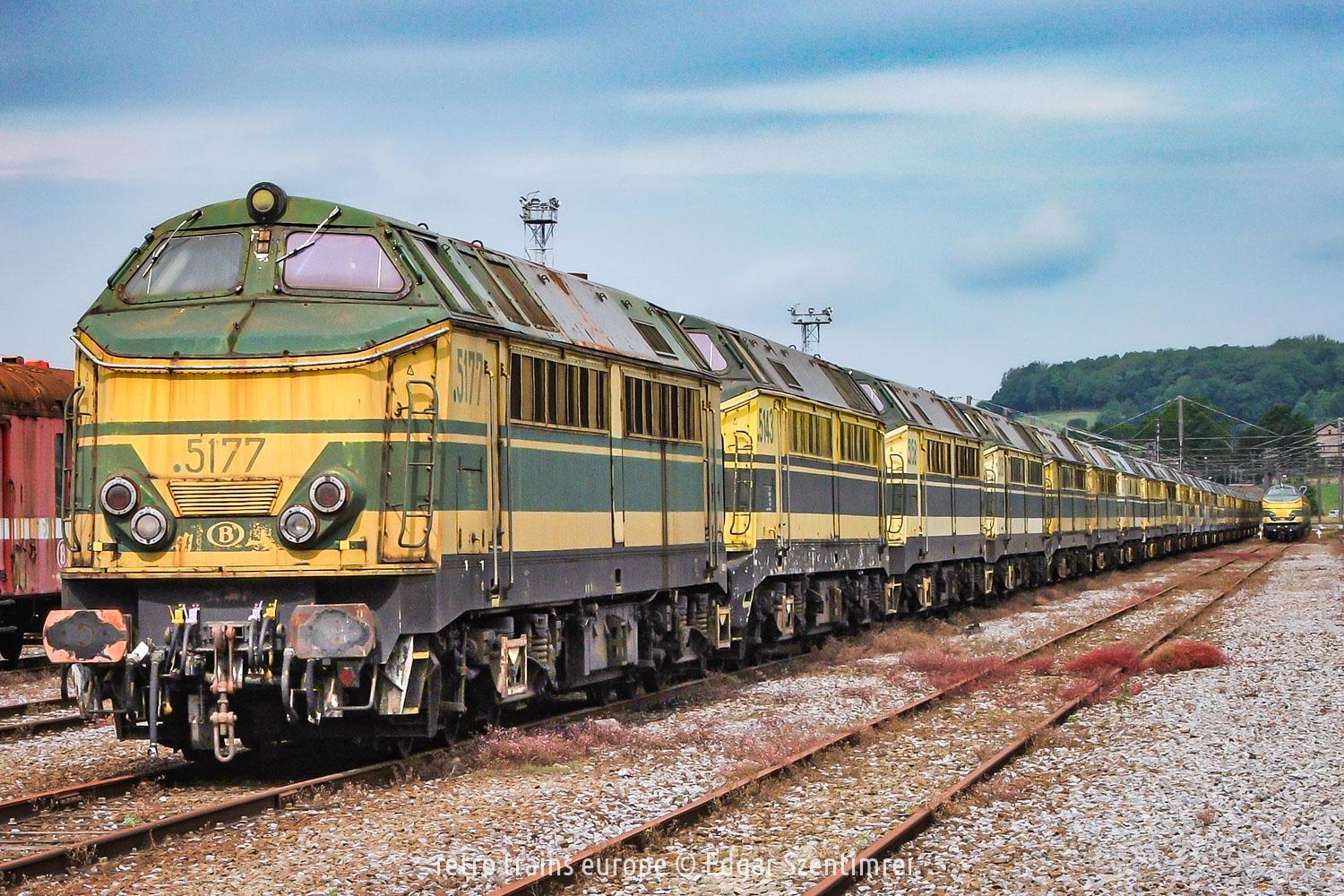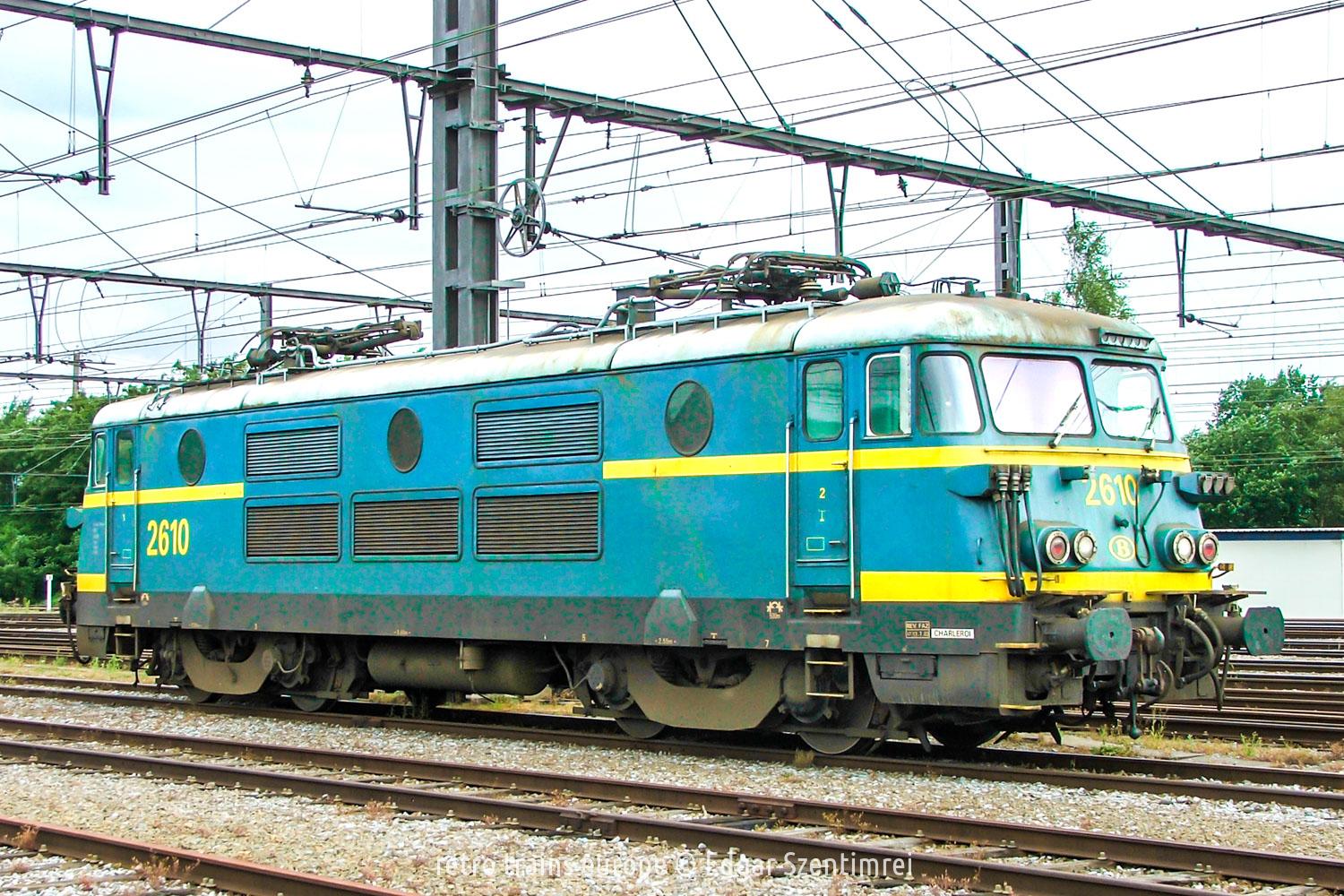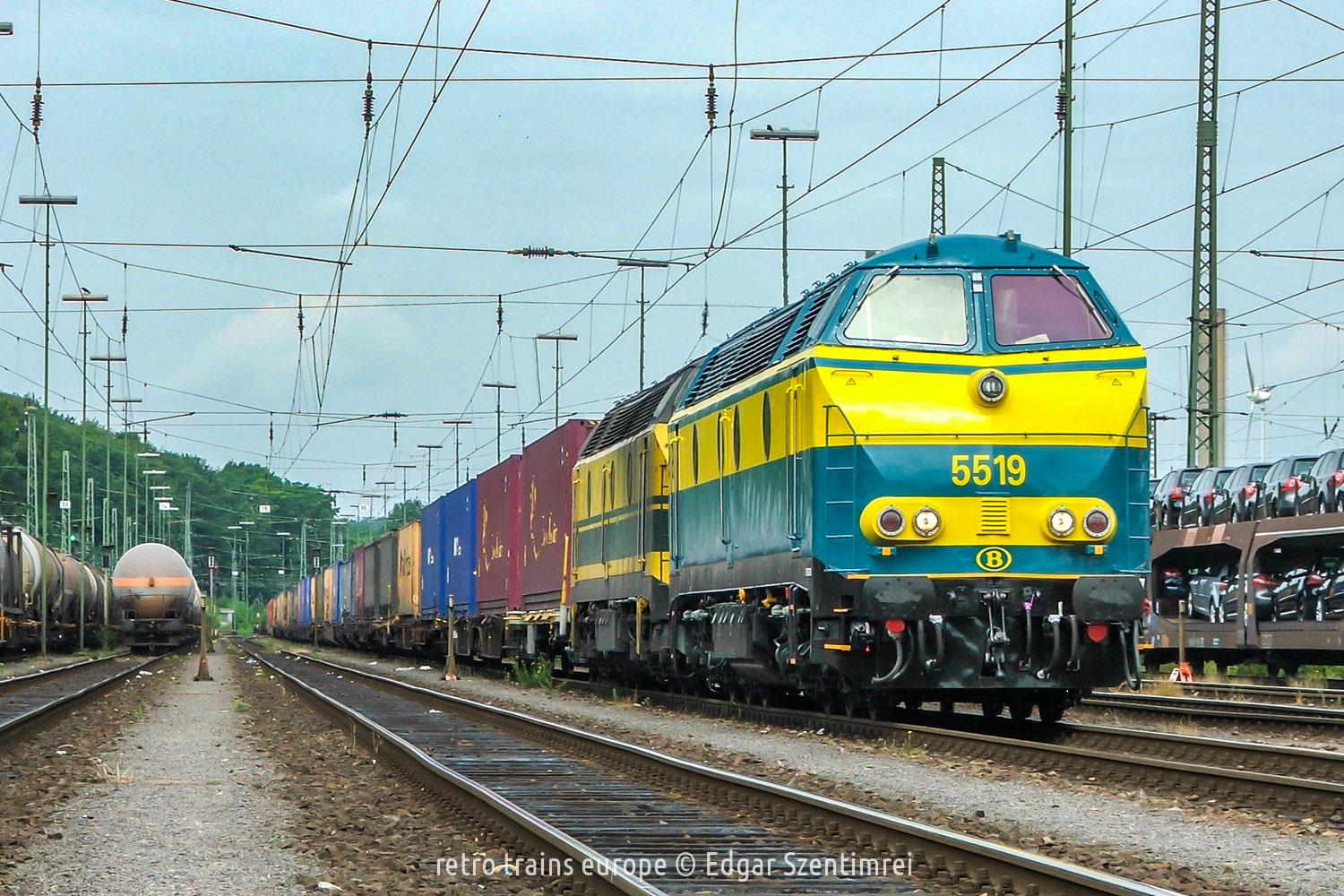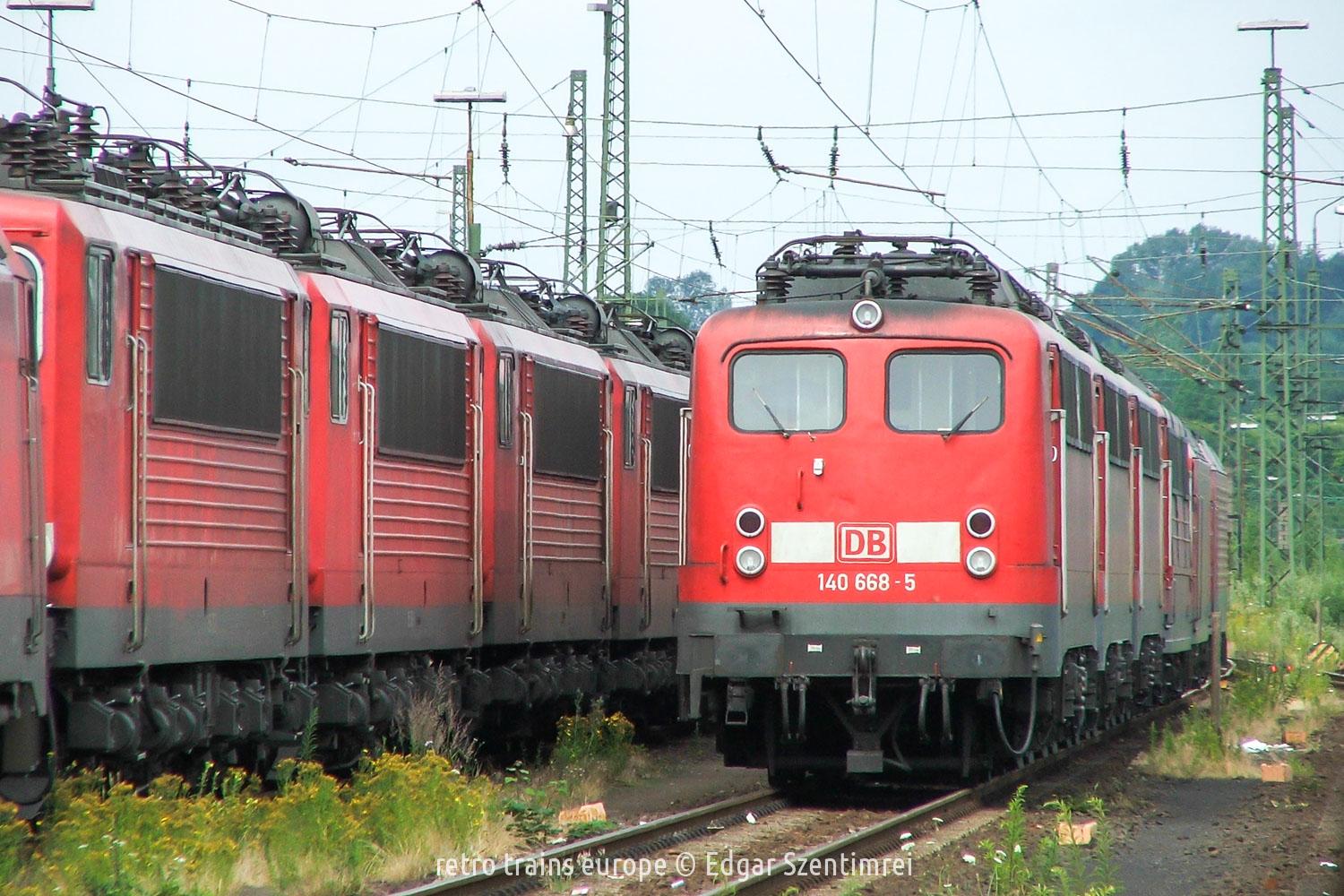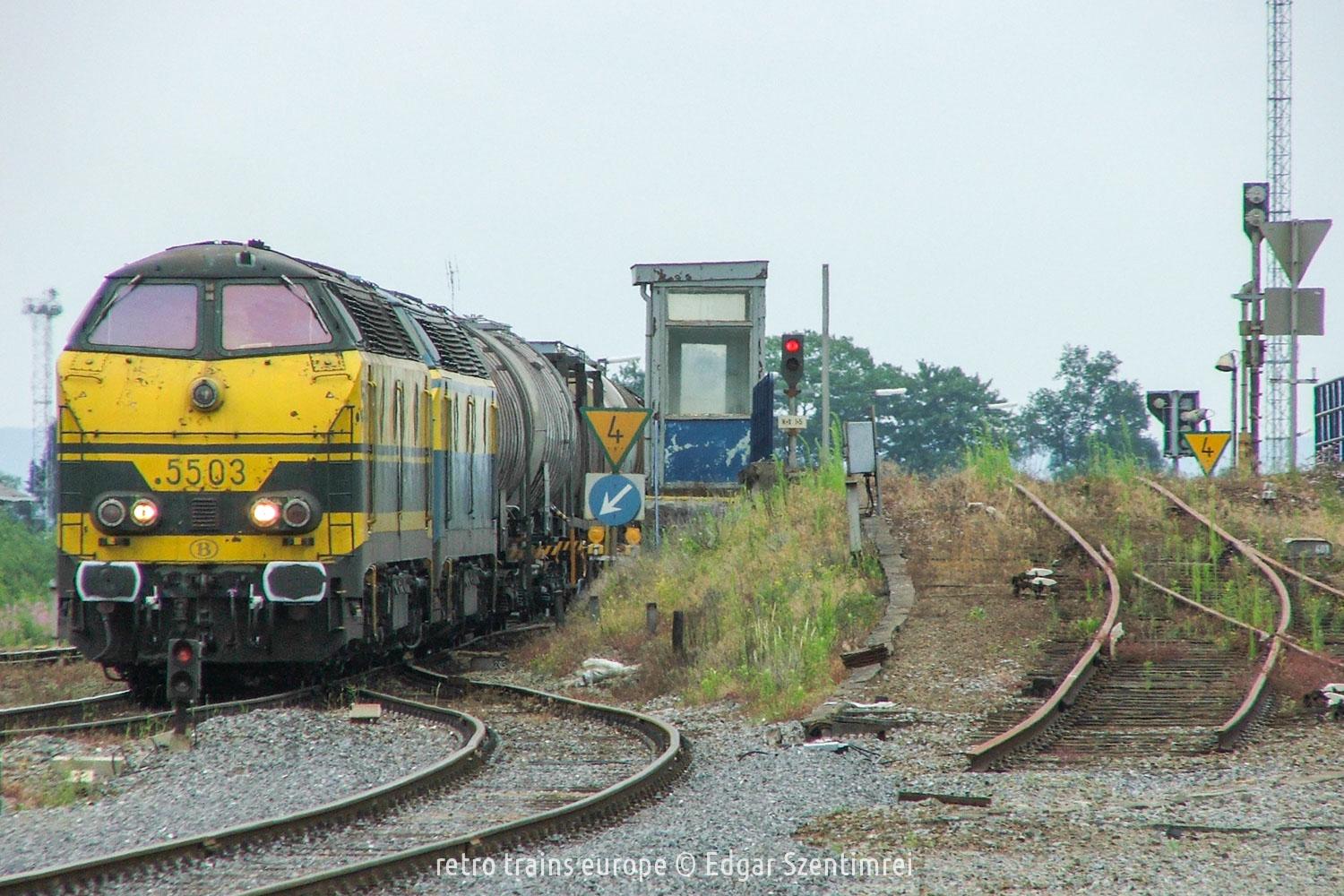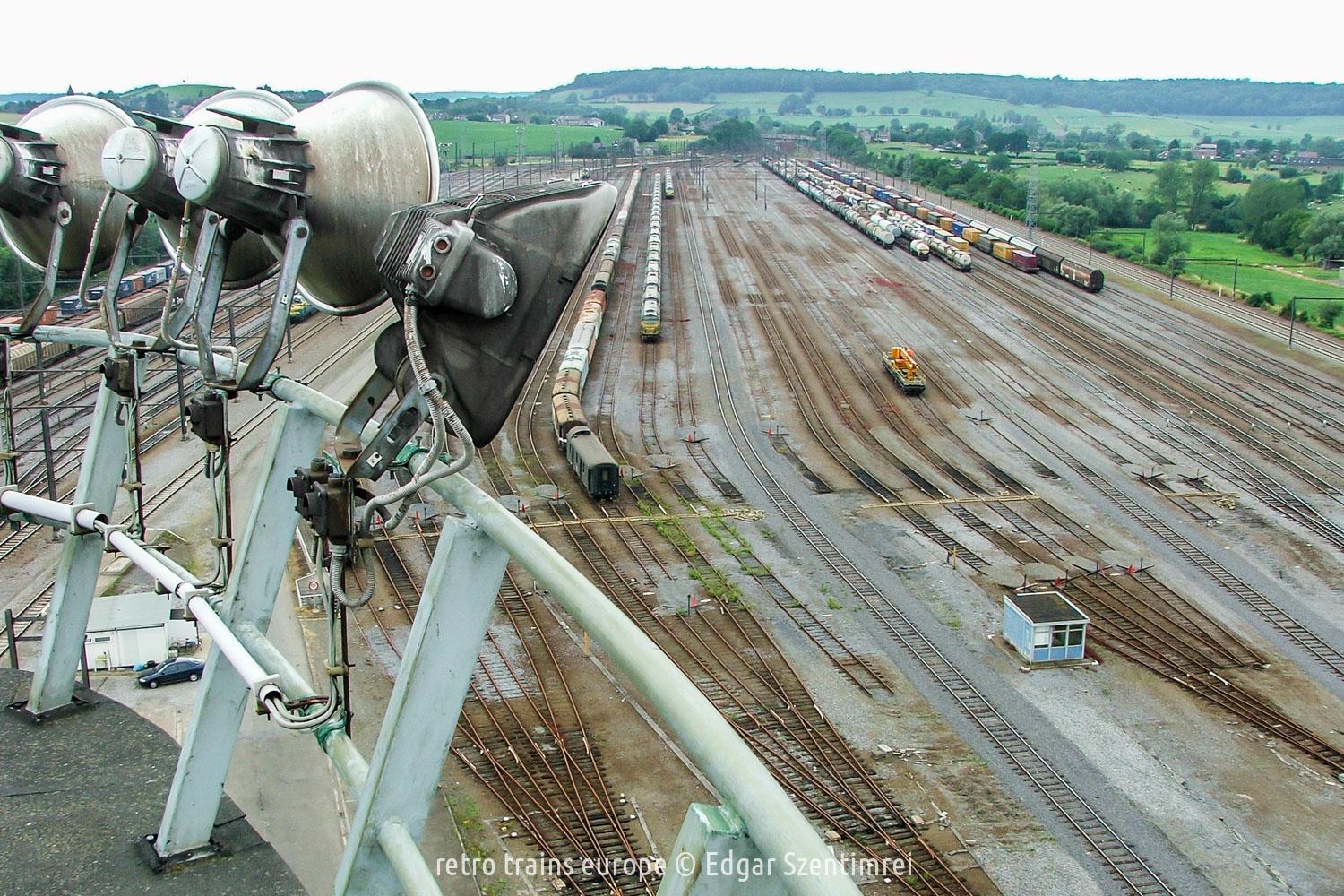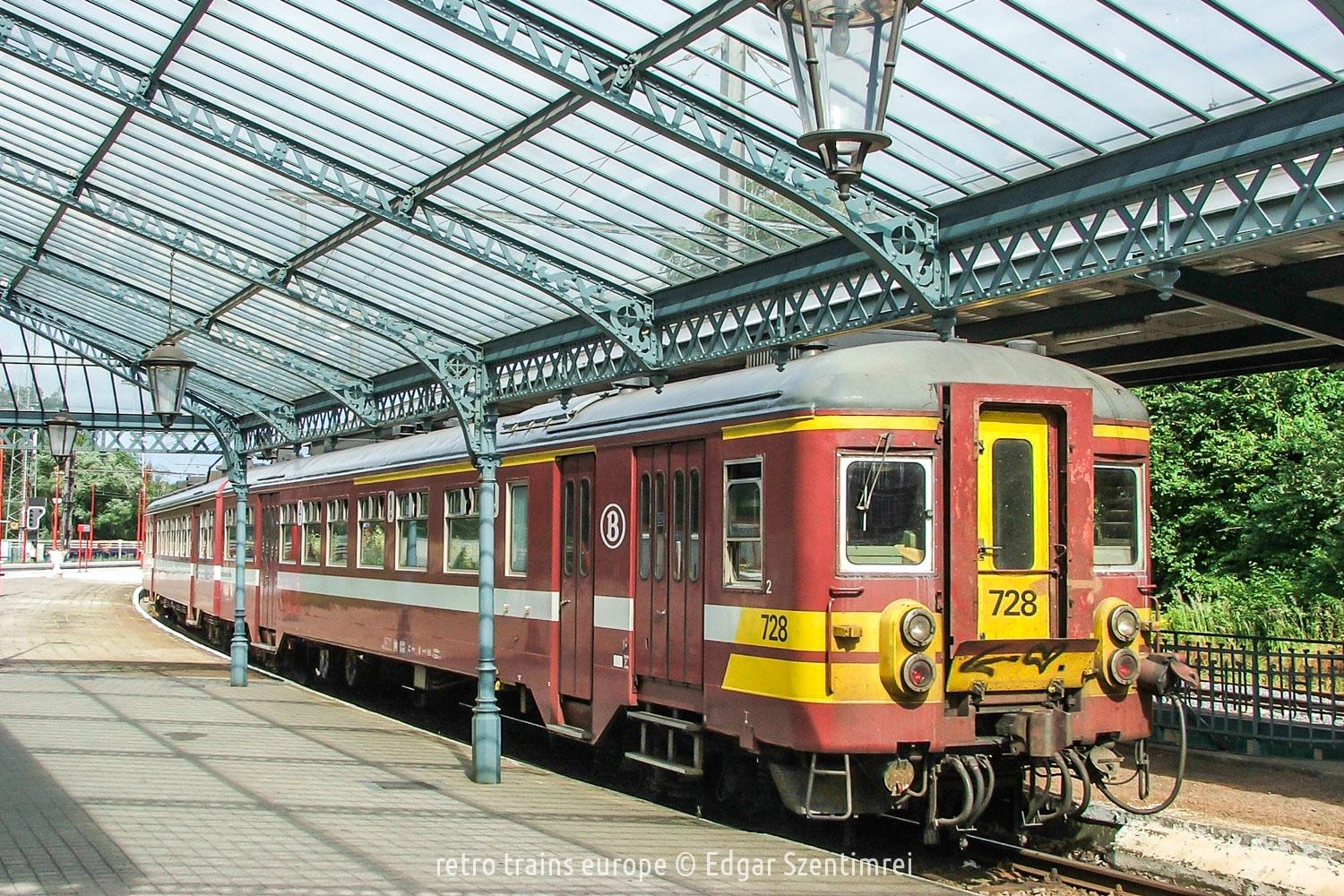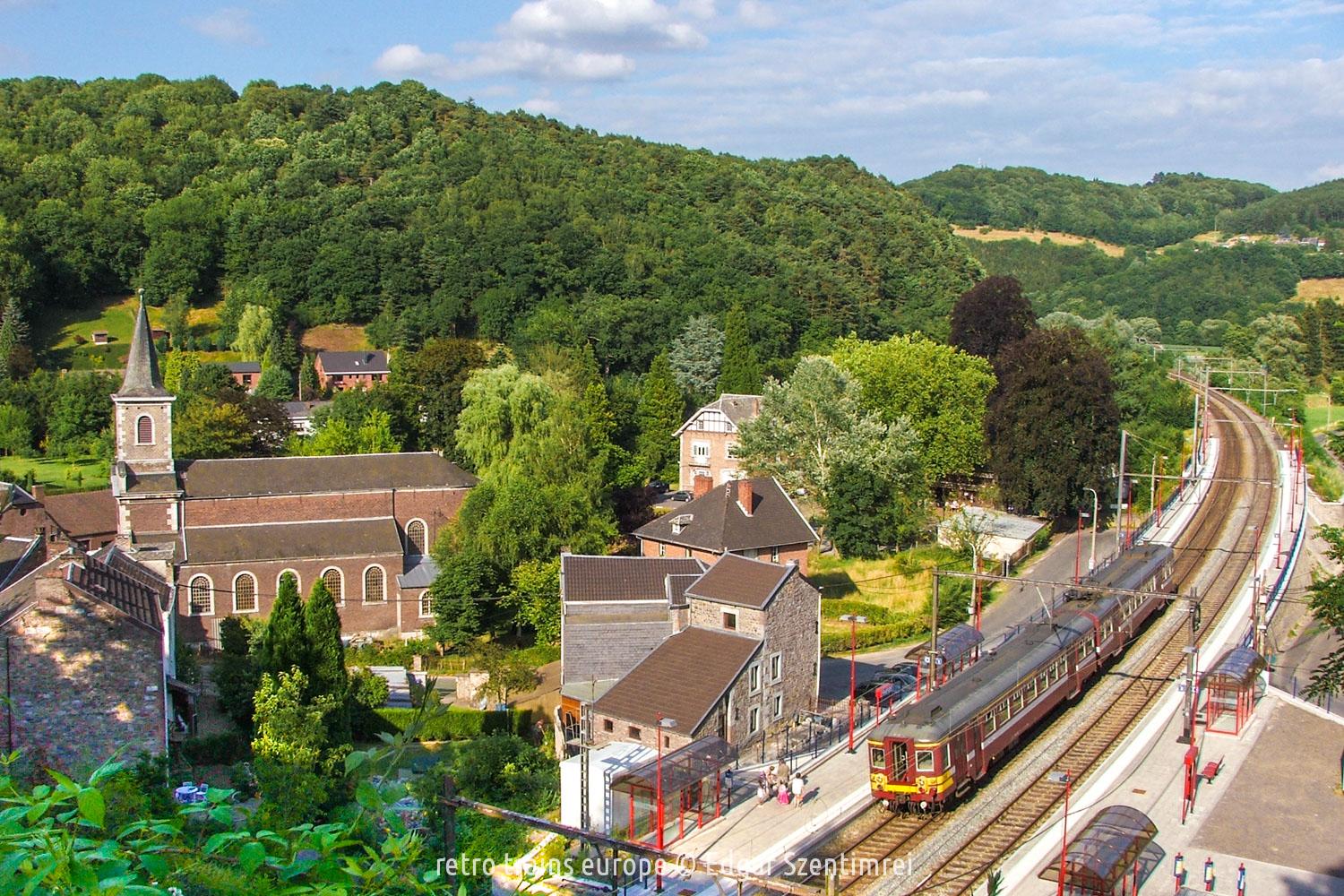Montzen - Aachen West, 9 July 2006
Due to the differing electrification systems between Germany and Belgium, multi-system locomotives are only used for express trains, while freight trains are hauled by powerful diesel engines between the Montzen and Aachen West border stations. Once the locomotive change is eliminated, the Montzen shunting yard, which once played a significant role, will lose its last function.
Built above the trains -- Sometimes, truly remarkable things are found in places where they are least expected. Verviers Central was supposed to be just a simple transfer station of today's journey, part of the route from Brussels to Montzen. In the rush, it's easy to overlook how ingenious the station building is, built perpendicular to the tracks, right above a tunnel portal. -- Verviers Central, 9 July 2006, 9:33
Fallen red flags -- Montzen, once a vast marshalling yard that employed hundreds of railwaymen, is now in its final hours. Most of the tracks are closed off, or used for storing old vehicles. A heritage railway could easily put together complete trains from here if only there was the capacity for their restoration. -- Montzen, 9 July 2006, 10:45
Fleet for Sale -- Between 1961 and 1963, a total of 93 locomotives from the SNCB 51 series were built at the Belgian Cockerill factory. Most of them were probably scrapped, some might find refuge in heritage railways but 33 locomotives are here, in Montzen, and we can assume that many are still operational. These are sturdy machines, and even railway construction companies can find a use for them at this age. -- Montzen, 9 July 2006, 10:48
At the end of the DC Universe -- The obsolete direct current locomotives of the Class 26 aren't superheroes, but persistent workers hauling freight trains from the ports of Zeebrugge or Antwerp to the German border. This is where the 3 kV DC network, the world of the DC locomotives ends, and they all need to turn back. -- Montzen, 9 July 2006, 11:13
Things come best in pairs - Between Montzen and Aachen West, freight trains are hauled by Class 55 diesel locomotives. These six-axle, nearly 2000-horsepower diesel-electric locomotives date back to the 1960s and are essentially counterparts of the M62 series, widely used in Eastern Europe. Or rather, they are similar to the 2M62s, as shown in the picture, typically operating in pairs. - Montzen, 9 July 2006, 11:23
After the Locomotive Change -- On Sundays, there are fewer freight trains, but there's no rest to be had. Locomotives 5510 and 5503 with a tank wagon train are ready to depart towards Aachen West. -- Montzen / Belgium, 9 July 2006, 11:35 CET
Rolling Above the Geul Valley -- A few minutes after the tank train, the pair of 5519-5538 also departed towards Aachen West. On the 7-kilometer section between Montzen station and the German entrance of the Gemmenich Tunnel, the railway line is still not electrified. This is because the Moresnet Viaduct had to be completely rebuilt first. The 1,107-meter-long, twenty-two-span steel girder bridge was reconstructed between February 2002 and October 2004 during weekend track closures at approximately 8-week intervals, while maintaining traffic between these periods. -- Moresnet Viaduct, 9 July 2006, 11:41 CET
The fast turnaround -- The 5519 and 5538 arrived from Belgium without any carriages, so there was no need for lengthy shunting; they could immediately be coupled to the container train heading back. -- Aachen West / Germany, 9 July 2006, 11:58 CET
Undersized Containers with Lamps and Windows? -- These strange little things are none other than the driver's cabs of the Cargo Sprinter container transport railcar, built by Windhoff. The Cargo Sprinter was an innovative concept for the short-distance transport of small quantities of containers, which, after initial success, was only in operation for two years. -- Aachen West / Germany, 9 July 2006, 11:59
Functionally Beautiful -- On the German side, there are also great classics, such as the rib-sided former East German BR 155s, or the well-known BR 140s, of which German industry produced 879 units between 1957 and 1973. It seems that these are not used, but there is usually another electric locomotive here that helps the freight trains climb the steep incline towards the Gemmenich Tunnel. -- Aachen West, 9 July 2006, 12:02 CET
Before passing the tunnel -- Two interesting features can be observed that make the railway operation unique here. One is the catenary and the sign 'Stop with electric locomotives'. This is where the unconnected electric locomotives pushing the heavy freight trains can reach, which simply stop here then roll back to Aachen West station. The other thing is the turnout at the tunnel entrance, which allows oversized trains to pass in the middle, of course after stopping the traffic from the opposite direction. -- Gemmenicher Tunnel / Germany, 9 July 2006, 12:31 CET
Diesels on the Viaduct -- The train was running on time, and there was even time for an extraordinary stop on the bridge before arriving at Montzen. -- Moresnet viaduct, 9 July 2006, 12:39 CET
Double Yellow, as always -- The short journey has come to an end. The two Class 55 locomotives are setting the train on one of the available tracks, from where they will continue with an electric locomotive. On the right of the picture, you can see two electrified tracks, which will allow the entire Montzen marshalling yard to be bypassed after the missing section is electrified. If this happens, the amazing Class 55 locomotives themselves will also be retired. --Montzen / Belgium, 9 July 2006, 12:44 CET
The Next Train Arrives -- Just half an hour after the arrival of the container train, the next freight train, a tank car train, arrived from Aachen West station. On the right side of the image, the remnants of the shunting mound can be seen. (Montzen / Belgium, 9 July 2006, 13:16 CET)
The Skyline of Montzen -- The control tower of the marshalling yard was built between 1967 and 1968 then due to technological advancements and automation, it was demolished in 2019. The building functioned as the center for railway control and logistics, and was designed in the industrial-modernist architectural style typical of the mid-20th century. Note the top level of the tower with the floodlights, it is also accesible. -- Montzen / Belgium, 9 July 2006, 13:18 CET
View from the 'Mast Basket' -- The size of the station is well illustrated by the fact that the recently arrived container train and tank train are so small they’re almost invisible in the picture. The middle tracks are only used for storage, if at all, with rust visible on the rails. -- Montzen, 9 July 2006, 13:34 CET
The game is over -- As we saw down there, the hump yard is no longer in operation, quite a lot of tracks and switches were demolished. Up here, the control panel of the hump yard still exists, but the cables have been pulled out, the buttons are covered in dust, and all of the tiny bulbs are dark. -- Montzen / Belgium, 9 July 2006, 13:37 CET
Instead of centralized control -- The modern lines of the Belgian railway network are now monitored from a large control center, but the operators at Montzen station are still here, in the tower. They control track occupancy, essentially the movement of trains, on this large board, but if they feel like it, they can also look out the window at any time. -- Montzen / Belgium, 9 July 2006, 13:38 CET
Leaving Montzen -- It is common for the Class 55 locomotives to be assigned other trains in addition to their work between Montzen and Aachen West. These wagons transport steel products, and if the destination is one of Charleroi’s steel mills, it’s definitely worth hauling the train with a Class 55 locomotive. This way, a locomotive change at Montzen can be avoided, and the diesel can also make its way back to the Kinkempois depot, where necessary checks or repairs are carried out. -- Van Voers/ Belgium, 9 July 2006, 14:48 CET
Spa, railway terminus -- It’s quite unusual that a city famous for its hot springs and Formula 1 race track has such a simple railway terminus. But these old electric railcars are so closely linked to the atmosphere of the Belgian regional lines that it's worth taking the time to appreciate them. -- Spa-Géronstère / Belgium, 9 July 2006, 16:07 CET
Comfort of the 70s -- Belgium’s characteristic regional electric railcars were built between 1939 and 1979, with class numbers jumping annually between AM39 and AM79. Unit 728, operating between Spa and Pepinster, is an AM73, meaning that at the time of our visit, it was already thirty-three years old. With all the advantages that come with it, as such first-class seats are rarely made today. -- Spa / Belgium, 9 July 2006, 17:00 CET
Stylish protection -- The branch line providing Spa’s rail connection has a very prestigious junction with the old main line Liège-Aachen. The station building at Pepinster is connected to a charming canopy made of steel and glass, where passengers can transfer or wait in a sheltered spot away from the rain. -- Pepinster/ Belgium, 9 July 2006, 17:21 CET
Mixed feelings -- The new high-speed line between Liège and Aachen is already under construction while the aging regional railcars and the Thalys trains traveling on the Paris-Brussels-Cologne route share the old main line. However, the super-express merely speeds through the village, while the 1962-built railcar faithfully serves the people living here. -- Fraipont / Belgium, 9 July 2006, 18:31 CET
Retirement job -- Unfortunately, we must accept that the world is changing, the railway is evolving, and soon Montzen, Belgium's last diesel paradise, will no longer exist. Classic diesel locomotives, once leading elegant express trains, are now also disappearing from the rattling freight trains, with nondescript electric locomotives taking their place. However, the power isn't always available from the wires, and the good old diesels make a comeback. -- Chênée / Belgium, 9 July 2006, 19:47 CET


